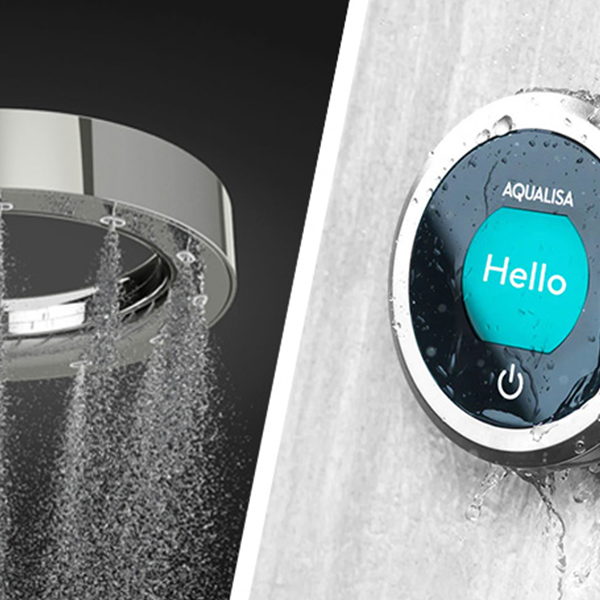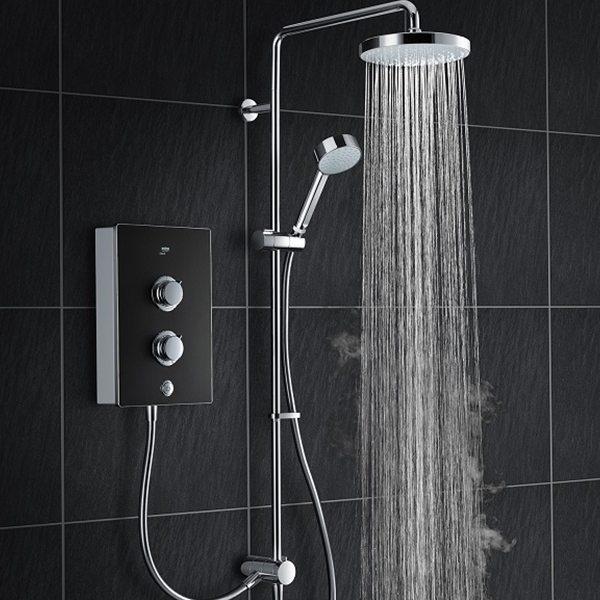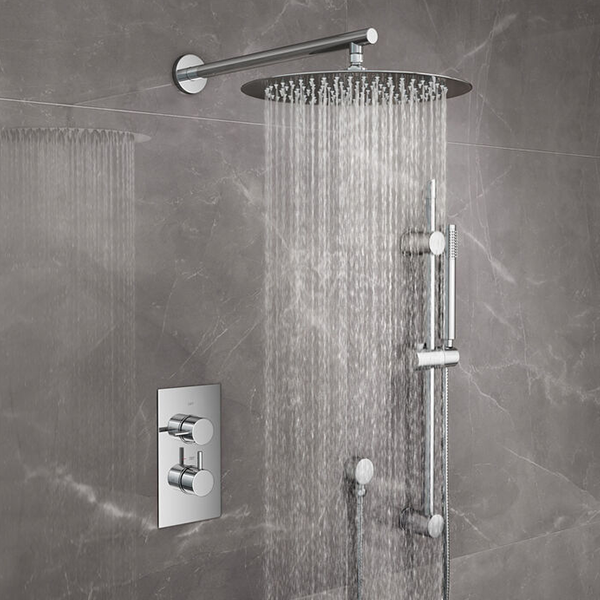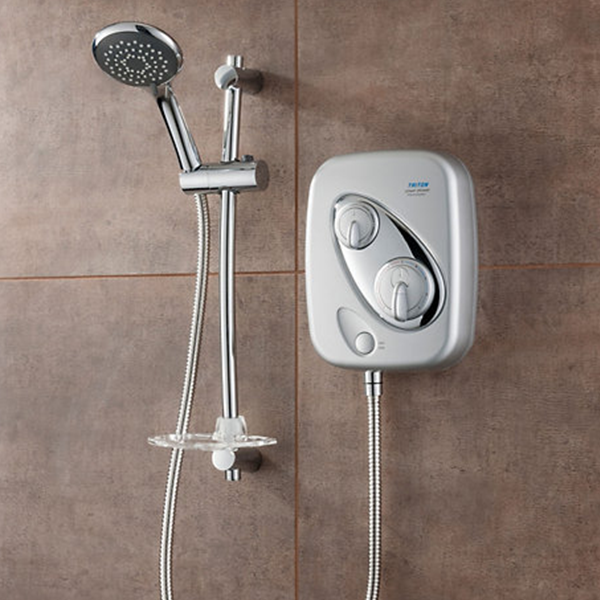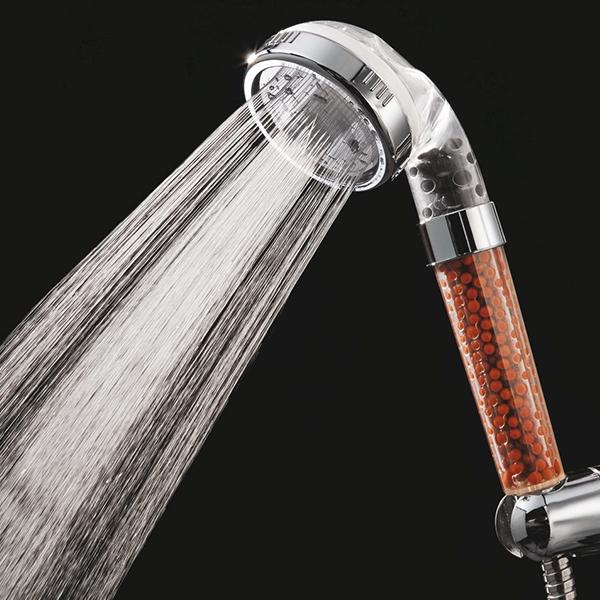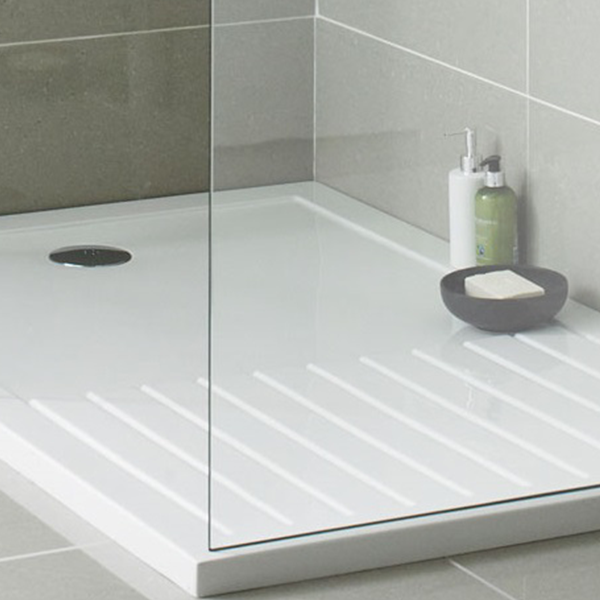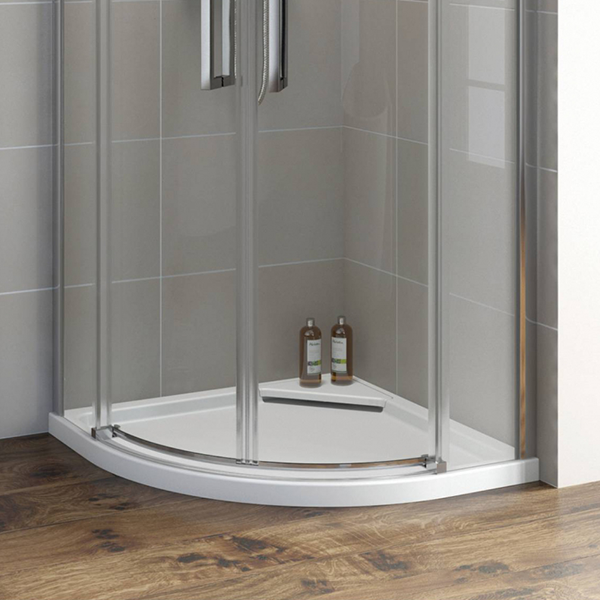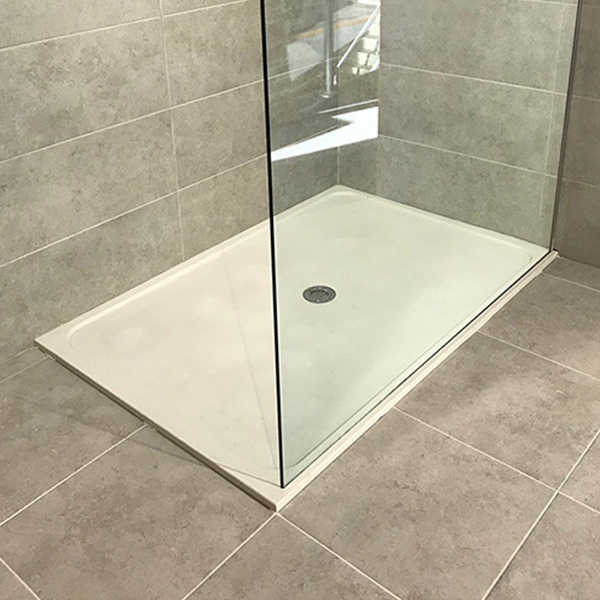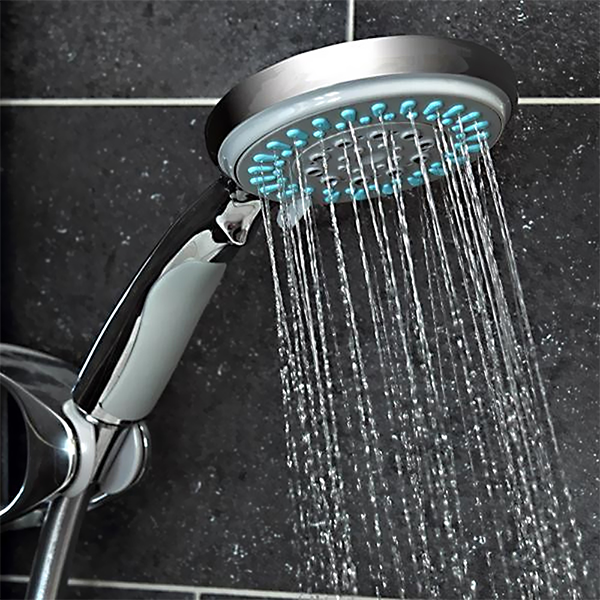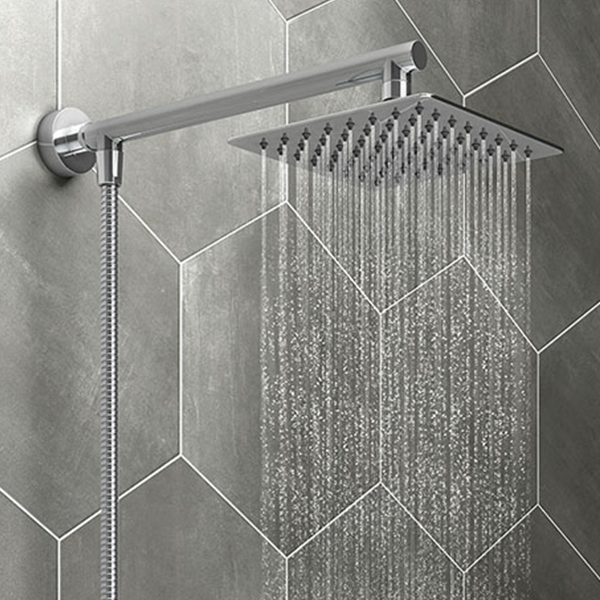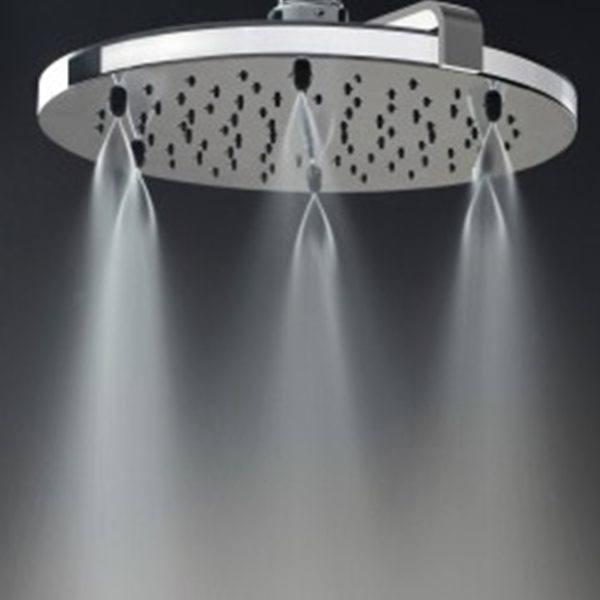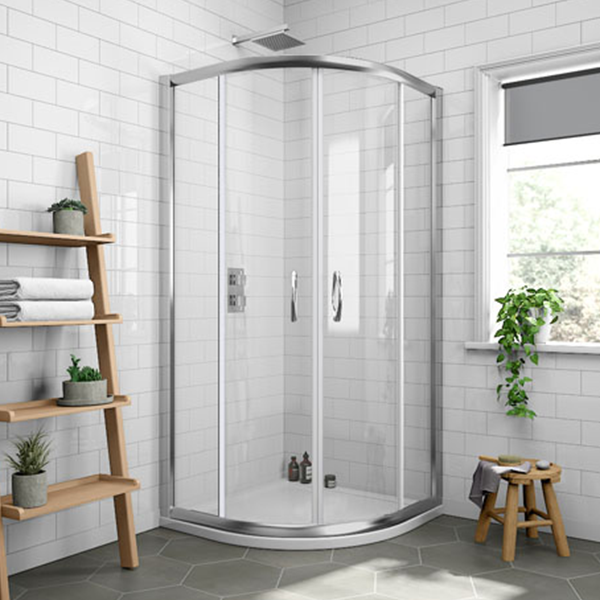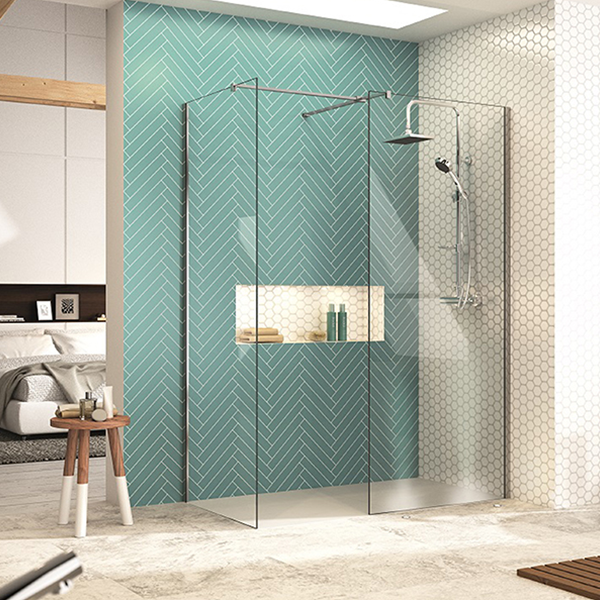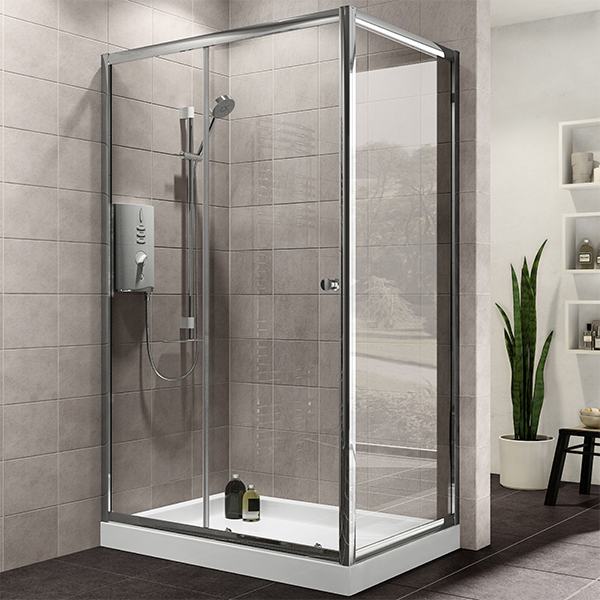Showers & Enclosures
A shower should be a sensory pleasure, to either revive or relax depending on your mood. Like a bath, your shower is often the focal point of your bathroom and comes in many shapes, sizes and style. There are certainly many elements to think about from the type of shower to the shower tray, shower head and type of enclosure, so below is a breakdown to help you with your decision making.
Digital Showers
Digital showers can be controlled by a panel located anywhere within a 10-metre radius of the shower. The panel then communicates with the power unit, located either in the loft or airing cupboard, to adjust the flow and temperature of the water. Water at a preferred temperature is then delivered through the ceiling or wall to the showerhead, and there is no unsightly plumbing visible. They are available as electric or mixer variations and can be operated by remote control.
Electric Showers
Electric showers draw on the cold-water supply and heat the water on demand. The cold water is heated by an element providing hot water instantly, it is quick and easy to install and extremely economic as it only heats the water it needs. Electric showers are more bulky, though less expensive, than mixer showers. More expensive models feature integral pumps which can improve the flow rate. Electric showers remain a popular option for second bathrooms that are generally used at off-peak times.
Mixer Showers
Mixer showers draw from both the hot and cold-water supplies and usually deliver higher flow rates. This type of shower is ideal for homes with readily available hot water such as a combi boiler or large capacity hot water cylinder. Both hot and cold water is mixed within the unit and then delivered through the shower. A pump can be added in the case of low water pressure.
Power Showers
Power showers draw from both hot and cold-water supplies and include an integrated pump to boost the flow rate. This type of shower is ideal where there is a low-pressure system as it offers the option of a high flow rate shower. Hot and cold water is mixed within the unit and the water is delivered through the shower similarly to a mixer shower.
Eco Showers
Eco showers feature a factory fitted flow regulator, with a focus on water efficiency. Eco showers are available in both electric or mixer variations and offer up to a 50% reduction in water usage compared to conventional mixer showers so are very economical.
Type Of Shower Tray
Unless you are opting for an over-bath shower, you will need a shower tray or base, where water can drain away. Some are designed for use with enclosures, others are designed to lie flush with the floor for walk-in units.
Ceramic trays are regarded as the best option, being strong and stable. However, enamelled steel and acrylic are also possibilities, as are those made from stone and even water-resistant hardwoods.
When installing a tray, remember that you will need to be able to access the waste for maintenance.
Type Of Shower Head
There are five main types of shower head: handheld, handheld on a slider rail, fixed (mounted on the wall), ceiling mounted and shower head that is combined with series of body jets.
Temperature and water pressure are commonly controlled by a thermostatic tap, which will detect changes in both and respond accordingly. Some models allow you to pre-set the temperature so that when you turn the shower on it is exactly as you want it to be.
Handheld showers are useful, if only for a second shower head, for rinsing hair, washing children, cleaning the bath etc. They can also be fitted to a slider rail, which means their height can be adjusted easily.
Most shower heads are now available with multiple spray options. Large shower heads (sometimes called ‘rain showers’) have become very popular. They are ceiling-mounted and are designed to drench in seconds. Multiple-jet showers are also on-trend, comprising not just one shower head, but a host of side jets and sprays.
Type Of Shower Cubicle
Having a separate shower in your bathroom means that a shower enclosure or cubicle is required.
Enclosures are made up of panels, a door and a shower tray, and complete kits can be bought to be fitted on a DIY basis, alternatively use the services of an approved fitter.
Shower doors can either swing outwards, swing both ways, fold inwards or slide along runners. Pivoting shower doors are easy-opening and hence practical, but, require a large clearance space. Sliding shower doors, unlike their pivoting counterparts, don't need any clearance (the panels overlap when open); but they can be problematic to maintain (choose removable sliding doors to facilitate cleaning). Swing doors consist of two half-doors opening inwards and/or outwards. Hinged doors avoid the need for a large amount of clearance in front of the cubicle and limit splashing outside the shower, however, an anti-splash gutter is recommended.
If possible, make use of a recessed area in your bathroom, then you just need to add a door and tray.
One-piece cubicles usually come in kit form and are easy to install. They are placed on the bathroom floor, connected to the water supply and the drain. Integral cubicles come with a variety of different options which can include a jacuzzi function - strategically positioned jets of pressurised water to massage your body.
Walk-in showers differ again in the sense that they are more of a showering area as opposed to an enclosed unit. They usually feature just one glass panel separating them from the rest of the bathroom, with no door. Walls and floors for walk-in showers must be fully waterproofed, as with wet rooms.
The Compare Network
Copyright – Insight Retail Group Ltd 2025 All rights reserved
